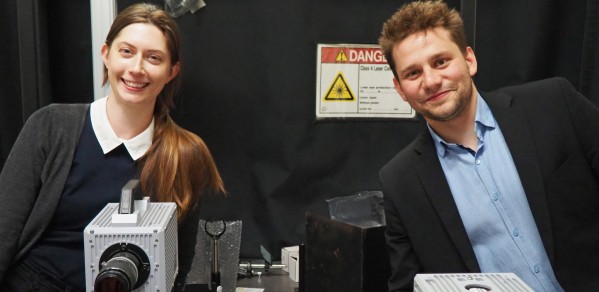
Savvas Gkantonas and co-authors awarded Best Paper by the ASME Combustion, Fuels, and Emissions Committee.
With this approach, novel synthetic fuels can be assessed on the computer at relatively modest computational cost, which allows innovations in developing technologies for net-zero carbon fuels without expensive lab testing.
Professor Epaminondas Mastorakos
The American Society of Mechanical Engineers (ASME) Turbo Expo Technical Conference is recognised as the world's leading conference on all aspects of gas turbine technologies. The ASME Technical Committees select a paper to receive their Best Paper Award. This is an opportunity to recognise outstanding technical papers and to acknowledge the authors' contributions to the gas turbine industry.
PhD student Savvas Gkantonas and his co-authors, PhD student Jenna M. Foale, Professor Epaminondas Mastorakos and Dr Andrea Giusti, presented their paper 'Soot Emission Simulations of a Single Sector Model Combustor Using Incompletely Stirred Reactor Network Modeling' at the 2020 Virtual Turbo Expo.
The research is part of Savvas' PhD research and was supported by the Engineering and Physical Sciences Research Council (EPSRC) and Rolls Royce.
"We are honoured to have received this prestigious award. The quality of all the papers presented at this conference was very high. The recognition of technical papers in the various gas turbine disciplines is important for the research community and helps support and maintain the high-quality contributions to the industry.
"The commercial aviation and gas turbine industry, in general, are in the middle of a large transition from conventional to alternative fuels with significantly smaller environmental impact. The emission of harmful pollutants from an engine's combustor, such as soot particles, is an important element for designing new technologies using old or new fuels. Engineers require a range of methodologies to predict those pollutants and adapt their design. This has been the focus of our work, and we are working on both simplified and detailed methods to predict pollutants from a turbulent flame or combustion system", said Savvas.
"Conventional kerosenes used for aviation fuel are very complex, non-uniform blends of heavy hydrocarbons adding a challenge to the already complicated soot modelling process. As the energy transition will occur over a significant period of time, it is imperative to develop practical models that can help us reduce emissions and improve operability both for existing as well as new fleets of gas turbine engines, especially in the context of 'hard-to-abate' sectors like commercial flight." said Jenna.
The researchers have proposed a new framework to assess soot emissions from gas-turbine combustors, which can be advantageous in practice thanks to its theoretical foundation combined with significantly smaller computational costs than current approaches.
"This work is a fundamental step to make advanced knowledge of pollutant formation accessible to the design of propulsion and energy systems. Modelling can definitely give an important contribution for transition to a zero-pollution society", said Andrea.
"This paper demonstrates how theoretically-sound Thermofluids modelling can have a real impact in industrial design. With this approach, novel synthetic fuels can be assessed on the computer at relatively modest computational cost, which allows innovations in developing technologies for net-zero carbon fuels without expensive lab testing." said Professor Epaminondas Mastorakos.

